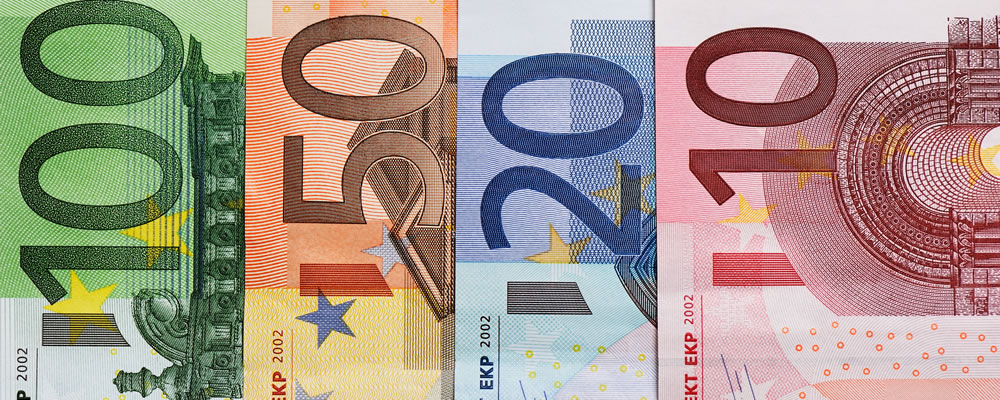The Euro to Pound exchange rate jumped as a flash crash during the Asian session sent Sterling spiraling lower across the board.
- Flash Crash Triggers GBP Losses – Pound hits new lows vs Euro and US Dollar
- Pound remained on muted form thanks to hard Brexit concerns – Lower odds of BoE easing failed to dent EUR GBP exchange rate
- Fed hike speculation continued to shore up US Dollar demand – Positive US data raised odds of imminent action
- EUR USD exchange rate volatility predicted on US Non-Farm Payrolls – Tight labour market could see ‘Greenback’ surge
A flash crash during the Asian session saw the Pound spiralling lower overnight, with EUR GBP rallying to 0.90.
However, the Euro has since given up some of its gains and the EUR USD exchange rate could fall later today if the US jobs data impresses.
With increasingly hard rhetoric coming from politicians in both the UK and the EU the chances of a hard Brexit seem to be rising, something which could keep the Pound under pressure.
[Previously updated 06/10/2016]
Worries over the outlook of the Eurozone have diminished somewhat, although the Euro to Pound exchange rate struggled to make particular gains.
Confidence in the US Dollar has been a little more limited, meanwhile, as investors brace for the latest domestic employment data.
Stronger German Factory Orders Bolstered EUR Exchange Rates
It was a relatively strong start for the Euro (EUR) on Thursday, with August’s German factory orders data markedly bettering expectations. There was a particularly strong rebound in activity on the year as orders increased by a bullish 2.1%, suggesting greater robustness within the manufacturing sector. This boded positively for the outlook of the Eurozone’s powerhouse economy, indicating that the impact of the Brexit vote and local economic turmoil remains limited. With expectations similarly positive for Friday’s industrial production figures investors were encouraged to pile back into the single currency. However, this bullishness soon began to fade as the resilience of the currency union remains in question.
Volatility could be in store for EUR exchange rates on the back of the minutes of the European Central Bank’s (ECB) last monetary policy meeting. Investors are keen to get a greater look at the views of policymakers, particularly given President Mario Draghi’s earlier assertion that no discussion occurred regarding alterations to the asset purchase program. If this more hawkish outlook is found to be reflected in the minutes then the Euro is likely to find further strength. On the other hand, if policymakers do not appear overly confident the single currency could fall back against its rivals.
Hard Brexit Fears Continued to Hamper Pound (GBP) Outlook
The mood towards the Pound (GBP) remained generally muted on Thursday as markets continued to worry over the prospect of a hard Brexit. Although the odds of the Bank of England (BoE) lowering interest rates again in the near future have been diminished as a result of positive domestic data this has failed to particularly buoy Sterling. Even with the UK economy having shown further signs of recovering from the initial shock of the referendum result investors remain concerned by its longer term outlook. As Lee Hardman, currency analyst at MUFG, noted:
‘The initial negative pound reaction highlights unease that giving up membership of the Single Market will hurt the UK economy, while there is little reassurance at this stage over the form of trade agreement that the government will realistically be able to secure with the EU to help dampen the fallout.’
Friday’s visible trade balance result could prompt the Euro to Pound (EUR GBP) exchange rate to trend higher. While expectations are for a modest narrowing of the trade deficit anything but a strong upside surprise is unlikely to trigger a Pound rally. However, if the deficit widens then confidence in the domestic economy is expected to weaken further. Given the uncertainty surrounding the UK’s future trading relations with the EU and the wider world the size of the deficit is likely to weigh heavily on the appeal of the Pound.
EUR USD Exchange Rate Volatility Forecast on Non-Farm Payrolls
Demand for the US Dollar (USD) has continued to strengthen over the course of the week, with markets speculating that the Federal Reserve could raise interest rates imminently. Robust ISM Manufacturing and Non-Manufacturing Indexes both pointed towards a solid uptick in economic activity within the US, prompting the Euro to US Dollar (EUR USD) exchange rate to slump. Some of the appeal of the ‘Greenback’ diminished on Wednesday afternoon, though, in response to a somewhat disappointing ADP Employment Change figure.
This is commonly viewed as an advance indicator for the more pivotal Non-Farm Payrolls report, which is set to determine the odds of a November Fed rate hike on Friday. Should the headline figure come in in line with forecast, however, and point towards continued tightness within the labour market then the US Dollar could return to a strong bullish trend. If the report proves mixed then any ‘Greenback’ rally could be more limited, suggesting that dovish policymakers are unlikely to shift their opinion before December at the earliest. A disappointing result here could see the EUR USD exchange rate make strong gains ahead of the weekend.
Current EUR, GBP, USD Exchange Rates
At the time of writing, the Euro to Pound (EUR GBP) exchange rate was on an uptrend in the region of 0.8797, while the Euro to US Dollar (EUR USD) pairing was slumped around 1.1186.



